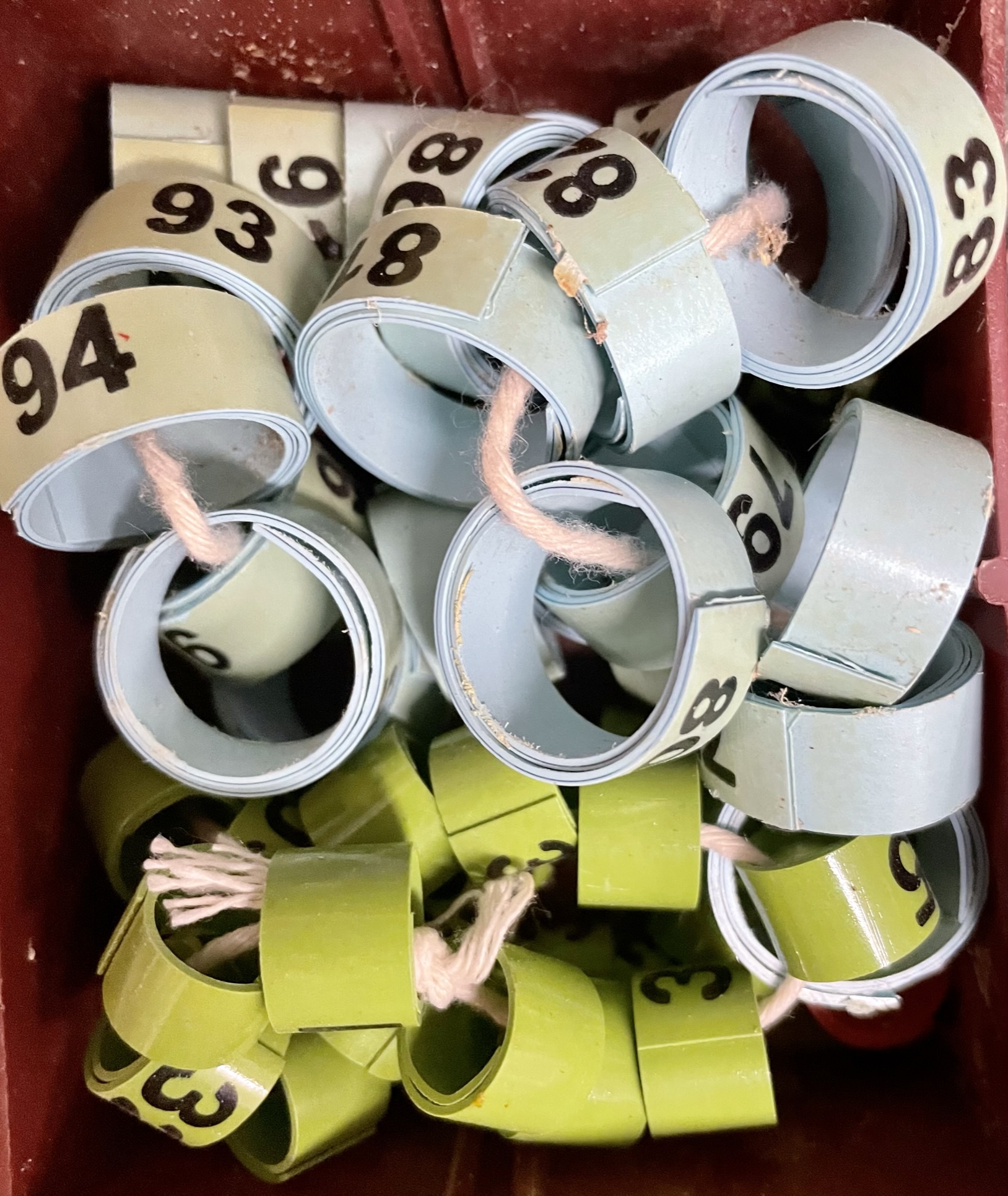Banding Exhibition Poultry
Most poultry breeders raise a number of young birds each year, usually in the early spring. With many breeders striving to breed to prescribed standards, like those adopted by the American Poultry Association, it is important for many reasons to keep track of your young birds, and a great way to do so is through banding your poultry.
There is an immense variety of banding products available on the market. These products range from simple, plastic, coloured coil rings, to numbered, plastic bandettes, to metal bands that are pressed on using special pliers. There are a number of factors that should be considered in selecting what banding product you wish to use. Bands are essentially available in two groups – closed or opened. Closed bands are sealed or seamless bands that must be applied to their subject at a young age, and, generally, stay in place through the life of the bird. Open bands are those that are not sealed and are either coiled or have a connection of some type that allow them to be placed or removed as desired.

When selecting what bands, or combination of bands to use, you might want to consider:
- Size of the adult bird: make sure, especially if using sealed bands, that the band fits comfortably on the birds’ leg. If you aren’t sure, check with a breeder what size they tend to use, or check out other resource sites, and the manufacturers or suppliers’ websites. They will usually provide guidance on what size to use for each breed. Be sure to keep an eye on adult birds to make sure that bands never get caught up on the leg or in the feathers, hock, or thigh. This can cause significant mobility issues for the birds and lead to negative welfare and health impacts.
- Sex of the birds: female birds tend to be slightly smaller and more refined than males. You can usually use a smaller size band for females than males, and in most breeds, females do not have spurs that impact the placement of the band. Usually, bands will sit comfortably above a male’s spur without issue. Bands placed below the spur can cause some constriction and should be avoided, particularly in bantams.
- Health of the birds: many health issues can lead to changes in leg structure. Often, infections can lead to inflammation in legs and hocks, and ongoing issues or untreated scaly leg mites can lead to lifting of scales, resulting in band constriction as well. Ensure you are regularly checking for and treating any sign of scaly leg mites and also correcting any health challenges that might impact the birds’ legs, feet, or ability to move freely.
- Temperature fluctuations in your local environment: it is generally well-known that materials vary in how they respond to temperature. Metals tend to expand and contract more than synthetic plastics; however, they also tend to be more durable and last longer. Metal bands also can retain their pressed marks well as they are usually embedded, while the older, spring style plastic bandettes tend to have painted or labelled markings, which wear off with age and environmental exposure. These plastic coiled bands, and the smaller coiled rings tend to also be far less durable when subjected to temperature extremes and should really only be considered for temporary markings.
Clayton Botkin, P.Ag. B.Sc. (Hons), APA General Licensed Judge #1234
